

Home » Weekly Blog » Unveiling Luxor’s Treasures: Discovering Hidden Gems Beyond the Temples
Luxor, the jewel of ancient Egypt, has long captivated travelers with its awe-inspiring temples and rich historical tapestry. Beyond the well-trodden paths leading to iconic landmarks like Karnak and Luxor Temples, lies a trove of hidden gems waiting to be discovered. In this exploration, we will delve into the lesser-known treasures that make Luxor a destination not just for history enthusiasts, but for those seeking a more intimate and authentic travel experience.
A. Luxor’s Historical Significance
B. Teaser for Hidden Attractions
C. The Importance of Uncovering Hidden Gems
As we embark on this journey beyond the temples, be prepared to witness Luxor in a new light, where each corner reveals a piece of the city’s vibrant and often overlooked history.

Luxor’s heartbeat pulses along the banks of the Nile, where the Luxor Corniche unfolds like a riverside tapestry. Stretching along the river’s edge, this enchanting promenade is a testament to the city’s enduring charm. With its panoramic views of the Nile and the surrounding historical landmarks, the Luxor Corniche sets the stage for a unique exploration beyond the famed temples.
The Luxor Corniche, bathed in the golden hues of sunrise and sunset, creates an ambiance that is both tranquil and vibrant. Here, the ancient and modern seamlessly converge, providing visitors with a sensory experience that goes beyond the confines of well-known archaeological sites. As the sun casts its warm glow over the palm-lined walkways, the stage is set for a journey into the heart of Luxor’s hidden treasures.
Venturing beyond the grandeur of temples, we find hidden gems nestled in the nooks and crannies of the Luxor Corniche. Local cafes, unassuming yet rich in character, invite travelers to pause and savor the flavors of Egyptian hospitality. From the aroma of freshly brewed coffee to the tantalizing scent of traditional delicacies, these cafes are portals to an authentic culinary experience.
Market stalls, adorned with vibrant displays of spices, textiles, and handcrafted goods, add a kaleidoscopic charm to the Corniche. Unlike the bustling markets of the city center, these hidden gems offer a more intimate shopping experience. Engaging with local vendors provides not only an opportunity to acquire unique souvenirs but also a chance to connect with the warmth and friendliness of the Egyptian people.
Navigating through the labyrinthine alleys adjacent to the Corniche, visitors may stumble upon hidden markets where artisans showcase their craft. From intricately woven textiles to hand-painted ceramics, these markets unveil the artistic soul of Luxor, often overlooked in the shadows of its more famous historical sites.
Beyond the tourist gaze lies a vibrant tapestry of daily life along the Corniche. Fishermen casting their nets into the Nile, children playing by the riverbanks, and locals engaged in animated conversations paint a living portrait of Luxor. The Corniche becomes a stage for the theater of life, where the pulse of the city is palpable.
As the day unfolds, the Corniche transforms into a social hub. Families gather for picnics, friends share laughter by the water, and street performers add a melodic soundtrack to the scene. Observing these everyday moments provides a unique perspective on the cultural richness that thrives beyond the archaeological wonders.
In the quiet hours of the evening, the Corniche takes on a romantic allure. Dimly lit cafes along the riverbank offer a perfect vantage point for watching feluccas sail gracefully on the Nile. The sounds of the city soften, and the Corniche becomes a sanctuary for reflection, away from the grandeur of Luxor’s monumental history.
As you immerse yourself in the daily rhythm of life along the Luxor Corniche, you’ll discover that this hidden gem is not merely a scenic pathway but a living testament to the soul of the city—a place where history, culture, and the present moment converge in harmonious splendor.

As the sun casts its first light over Luxor’s West Bank, the Valley of the Artisans emerges as a hidden gem, often overshadowed by the grandeur of neighboring archaeological sites. Deir el-Medina, as it is historically known, served as the residential complex for the craftsmen and laborers responsible for constructing the tombs in the Valley of the Kings. This secluded village offers a glimpse into the daily lives of the skilled artisans who played an essential role in shaping the funerary landscape of ancient Egypt.
Beyond the colossal temples and royal tombs, the Valley of the Artisans is an archaeological treasure trove. The well-preserved structures, including the artisans’ homes, administrative buildings, and even a communal cemetery, provide a rare window into the social dynamics of this close-knit community. Stroll through the narrow streets where these skilled workers once lived, and you’ll find yourself transported back in time to an era of craftsmanship and creativity.
The journey through Deir el-Medina unfolds like a living museum. Artifacts, tools, and remnants of daily life, meticulously preserved, offer insights into the routines of the craftsmen who toiled to create the monumental tombs on the nearby hills. The rock-cut tombs of the artisans themselves, adorned with vivid scenes from everyday life and religious rituals, stand as a testament to the craftsmanship that transcended the purely practical.
Venture beyond the well-trodden paths to discover hidden tombs, each telling a unique story through vivid hieroglyphs and intricate murals. The vivid colors and detailed depictions provide a glimpse not only into the individuals buried within but also into the beliefs and aspirations of a community devoted to their craft.
In the shadow of the Valley of the Kings, the Valley of the Artisans unveils a more intimate side of Luxor’s history. The insights gained from exploring this lesser-known site extend beyond the intricacies of tomb construction. They offer a holistic understanding of daily life in ancient Egypt—the joys, challenges, and communal spirit that permeated this secluded village.
By delving into the Valley of the Artisans, visitors can appreciate the symbiotic relationship between the craftsmen and the nobility they served. This site becomes a bridge between the monumental grandeur of Luxor’s famous necropolises and the human stories that breathed life into these architectural marvels.
As you step into the footsteps of the artisans who shaped Luxor’s ancient landscape, the Valley of the Artisans becomes not only a hidden gem but a living testament to the craftsmanship that defined an era. Beyond the temples and monuments, it is here that the heartbeat of Luxor’s history echoes through the narrow alleys and ancient tombs, inviting you to uncover the stories woven into the very fabric of this extraordinary city.

Beyond the stone monuments and ancient relics, Luxor’s hidden treasures extend to its culinary landscape. Delving into the local food scene is not just a gastronomic adventure but a cultural exploration. The vibrant tapestry of Luxor’s hidden culinary delights weaves together flavors, traditions, and stories passed down through generations.
Luxor’s cuisine is a reflection of its diverse history, influenced by ancient Egyptian, Arabic, and Mediterranean flavors. From aromatic spices to succulent meats, the hidden gems of local eateries promise a feast for the senses. As you venture off the beaten path, prepare to embark on a culinary journey that transcends the ordinary.
While the bustling streets near Luxor’s main attractions boast an array of dining options, the true essence of local cuisine lies in the hidden corners of the city. Away from the tourist-centric menus, these hidden gems offer authentic dishes prepared with love and tradition.
Step into the unassuming eateries favored by locals, where recipes have been passed down through generations. Indulge in the warmth of Egyptian hospitality as you savor dishes like koshari, a delectable blend of lentils, rice, and pasta topped with a flavorful tomato sauce. Explore the artistry of local chefs who take pride in preparing dishes that capture the essence of Luxor’s culinary heritage.
For those seeking an immersive culinary experience, it’s essential to venture beyond the well-known establishments. Engage with locals, ask for recommendations, and be open to trying dishes that may not be featured in guidebooks. Street food markets, hidden cafes, and family-run restaurants become portals to the heart of Luxor’s gastronomic traditions.
Consider participating in cooking classes offered by locals, where you can learn to recreate traditional dishes and gain insights into the cultural significance of each ingredient. Embrace the communal spirit of sharing meals, as it not only provides a taste of Luxor’s culinary diversity but also fosters connections with the people who call this city home.
In the pursuit of Luxor’s hidden culinary delights, you’ll discover that each dish tells a story—a story of heritage, community, and the timeless art of crafting flavors. As you savor the hidden gems of Luxor’s gastronomy, you’ll find that the city’s true essence is not only etched in its ancient stones but also in the rich tapestry of its culinary traditions.

Embark on a sensory journey through Luxor’s vibrant souks, where the kaleidoscope of colors, the fragrance of spices, and the hum of lively conversations create an immersive tapestry of the city’s cultural richness. While Luxor is renowned for its archaeological wonders, its bustling markets offer a different kind of treasure trove, inviting visitors to explore hidden gems beyond the temple walls.
The markets, or souks, of Luxor are a labyrinth of narrow alleyways lined with stalls showcasing a myriad of goods. From vibrant textiles and intricately crafted jewelry to aromatic spices and exotic fruits, the souks are a celebration of the city’s diverse offerings. Navigating this maze is an adventure in itself, where each turn reveals new delights waiting to be discovered.
While Luxor’s main streets may be adorned with typical tourist souvenirs, the hidden treasures lie within the heart of the markets. Engage with local artisans who handcraft intricate souvenirs, such as alabaster sculptures, traditional pottery, and handmade textiles. These unique pieces not only serve as mementos of your journey but also contribute to the preservation of traditional craftsmanship.
The spice stalls offer a sensory feast, with vibrant pyramids of exotic spices and herbs. Take a moment to engage with the spice merchants, who often share the stories behind each blend. Whether you’re seeking the perfect souvenir or aiming to infuse your culinary creations with authentic flavors, Luxor’s souks hold the key to a truly unique shopping experience.
Bargaining is an art form in Luxor’s markets, and engaging with local vendors adds a layer of authenticity to your shopping experience. Approach each transaction with a friendly demeanor, and don’t be afraid to negotiate prices. It’s not just about securing a good deal but also about forging connections with the people who bring these markets to life.
Learn a few basic Arabic phrases for bargaining, and be open to the banter that often accompanies these interactions. The rapport you build with local vendors can lead to unexpected discoveries, from hidden gems tucked away in their stalls to insights into the cultural significance of the items you’re purchasing.
As you navigate Luxor’s vibrant souks, you’ll find that the market experience is not just about acquiring goods but about immersing yourself in the lively spirit of the city. Each interaction, each purchase becomes a story—a chapter in your personal exploration of Luxor’s hidden gems beyond the temples.
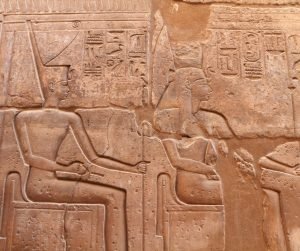
While Luxor is renowned for its iconic temples, the Temple of Mut stands as a hidden marvel, often overshadowed by its more celebrated counterparts. Dedicated to the goddess Mut, the mother goddess associated with the protection of royalty, this temple holds a unique place in Luxor’s historical tapestry. Nestled amidst the sprawling complex of Karnak, the Temple of Mut invites intrepid travelers to uncover its secrets and appreciate its architectural splendor.
The history of the Temple of Mut dates back to the New Kingdom period, with successive pharaohs contributing to its construction and expansion. Despite facing the ravages of time, the temple still offers a glimpse into the religious and ceremonial practices of ancient Egypt.
The architectural grandeur of the Temple of Mut is a testament to the skilled craftsmanship of ancient Egyptian builders. While not as vast as Karnak Temple, Mut’s sanctuary, colonnades, and intricately carved reliefs showcase a distinctive style. Exploring the temple reveals hidden chambers, courtyards, and sacred spaces that provide insight into the religious rituals conducted within its walls.
Among its lesser-known features are the remnants of a sacred lake and the avenue of sphinxes that once connected the temple to Luxor Temple. These elements contribute to the site’s allure, offering a more intimate connection with the religious practices and beliefs of ancient Luxor.
For history enthusiasts seeking a deeper understanding of Luxor’s religious landscape, the Temple of Mut is a must-visit. Its relative obscurity means fewer crowds, allowing for a more contemplative exploration of the site. The muted sunlight filtering through the ancient stones, the echoes of history in the air, make the Temple of Mut a sanctuary for those who appreciate the quieter, more profound moments of archaeological discovery.
As you step into the shadow of the Temple of Mut, you’ll find yourself transported to an era where gods and goddesses were revered, and ceremonies unfolded in the hallowed halls of sacred structures. Luxor’s hidden marvel awaits, inviting you to unravel its mysteries and bask in the spiritual ambiance that lingers within its weathered walls. Beyond the bustling tourist routes, the Temple of Mut stands as a testament to Luxor’s multifaceted history, beckoning those with a passion for the ancient to uncover its well-preserved secrets.
Beyond the stone monuments and archaeological wonders, Luxor pulsates with a vibrant cultural heartbeat. Immersing yourself in the city’s offbeat cultural events unveils a side of Luxor that transcends the pages of guidebooks. Throughout the year, the city comes alive with festivals, celebrations, and events that offer a unique lens through which to experience its rich heritage.
Luxor’s calendar is adorned with a tapestry of cultural festivities. From the mesmerizing Luxor African Film Festival to the spirited celebration of Ramadan, these events provide a firsthand look at the diverse cultural influences that shape the city. Attending local festivals allows travelers to connect with the rhythms of everyday life, fostering a deeper appreciation for Luxor’s living traditions.
For those seeking an immersive experience, participation in community activities adds a layer of authenticity to the cultural exploration. Local workshops, traditional music performances, and art exhibitions offer opportunities to engage with Luxor’s artistic community. Whether it’s learning traditional dance steps or trying your hand at ancient crafts, these activities forge connections with the city’s living culture.
During major religious and cultural celebrations, such as the Festival of Abu al-Haggag, locals and visitors converge to partake in processions, music, and traditional performances. Engaging with these events not only provides insight into Luxor’s cultural heritage but also allows travelers to become active participants in the festivities.
Staying informed about upcoming cultural events is essential for travelers looking to align their visit with unique experiences. Local event calendars, community bulletin boards, and social media platforms are valuable resources for staying updated on the latest happenings in Luxor. Engaging with the local community online can provide insights and recommendations for offbeat events that may not be widely publicized.
Planning your visit around specific cultural events not only enhances your travel itinerary but also allows you to witness Luxor’s living culture in motion. By participating in offbeat cultural events, you’ll uncover a side of Luxor that goes beyond the static narratives of history, offering a dynamic and evolving connection to the heart and soul of this extraordinary city.
In the pursuit of Luxor’s hidden treasures, our journey has led us beyond the well-trodden paths of iconic temples and archaeological wonders. From the enchanting Luxor Corniche to the mesmerizing Karnak Sound and Light Show, the Valley of the Artisans, hidden culinary delights, vibrant souks, the Temple of Mut, and offbeat cultural events, each chapter unveiled a facet of Luxor that often eludes the casual traveler.
Luxor’s allure lies not only in its towering monuments but in the nuances of everyday life, the hidden corners, and the cultural tapestry that weaves through its streets. Encouraging readers to venture off the typical tourist path, we invite you to embrace the spirit of exploration, to wander with curiosity, and to discover the beauty that resides in the lesser-known corners of this ancient city.
By venturing beyond the temples, you have delved into the heartbeat of Luxor—where history, culture, and authenticity converge. The hidden gems explored offer a richer, more nuanced understanding of Luxor’s past and present, inviting you to become an active participant in the living narrative of this extraordinary destination.
As you embark on your own journey through Luxor, we invite you to share your experiences, discoveries, and insights. Luxor’s hidden gems are ever-evolving, shaped by the stories of those who traverse its streets and uncover its secrets. Your feedback and contributions add depth to the collective tapestry of knowledge, ensuring that future explorers continue to uncover the magic that lies beyond Luxor’s temples.
In concluding our exploration of Luxor’s hidden wonders, we hope this guide inspires you to seek out the extraordinary in the seemingly ordinary, to relish the joy of unexpected discoveries, and to embrace the spirit of adventure that Luxor, with its hidden gems, so generously offers to those who dare to look beyond the temples. Safe travels on your journey through the timeless allure of Luxor!
Sign up to hear about our upcoming adventures, monthly newsletter, exclusive offers, and more!
Required*
Not Ready to book?
Get regular updates on upcoming tour and special promotions.

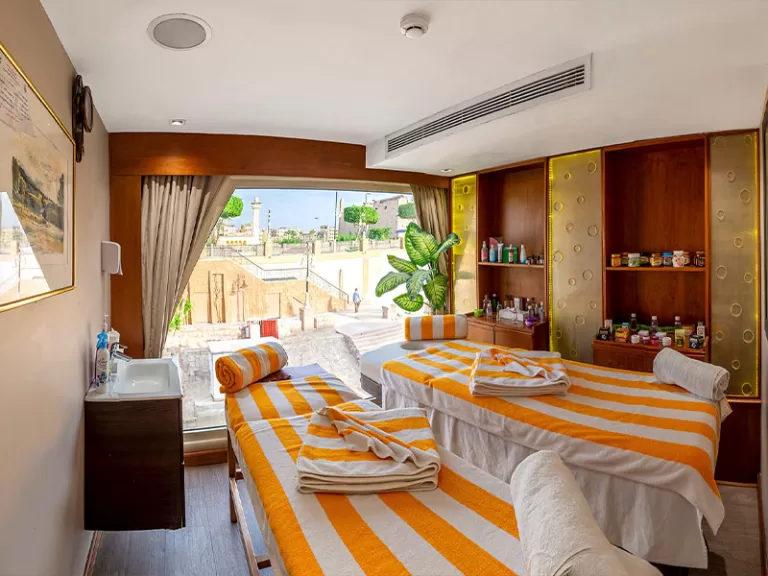


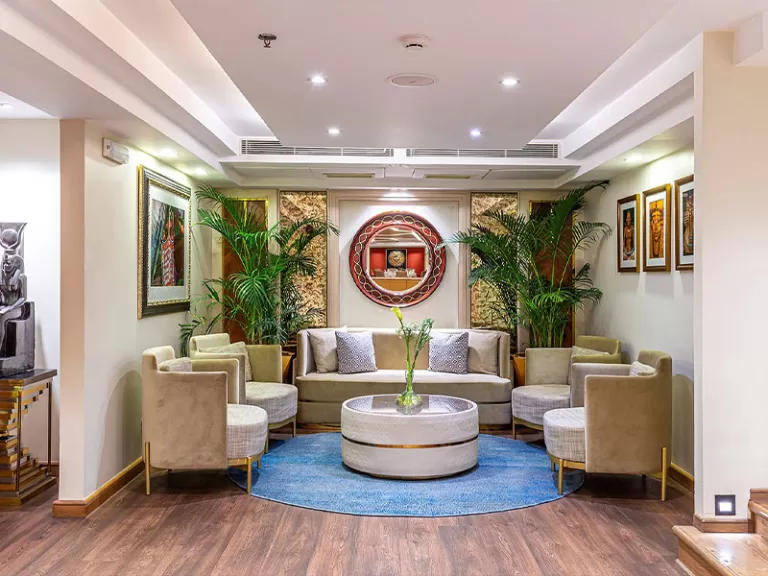
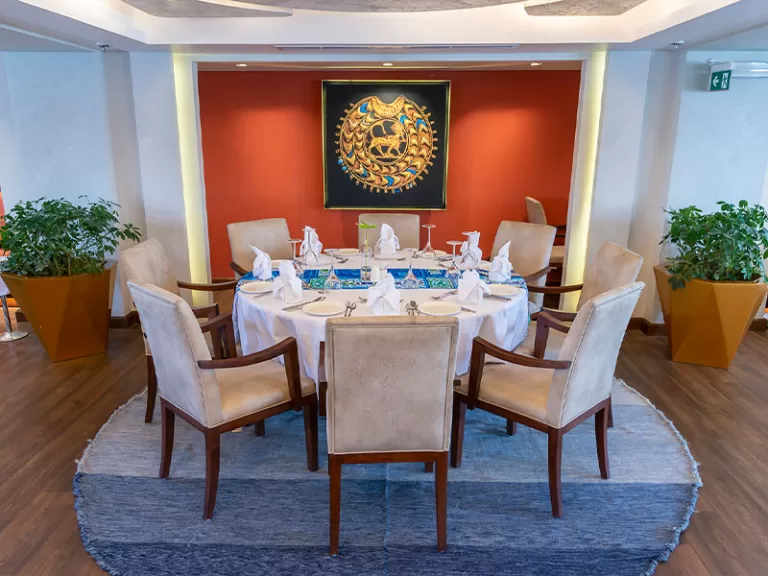
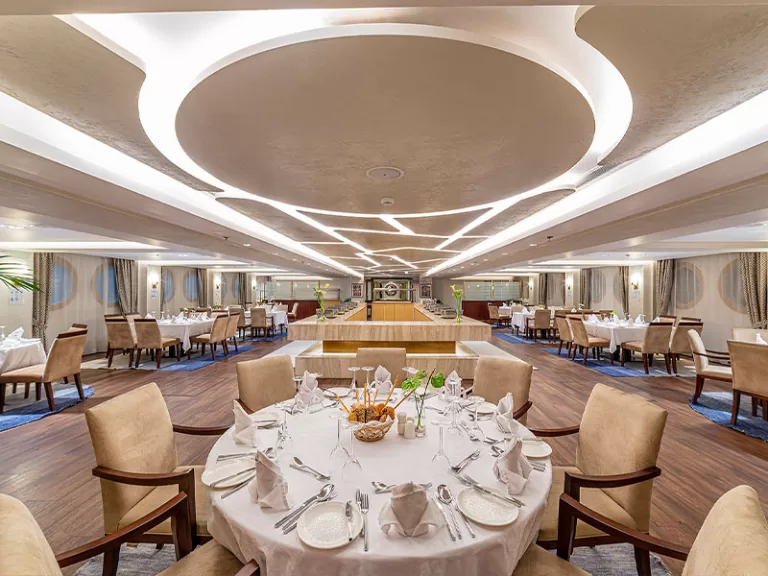
Sign up for our Mailing List to get updates on our current offerings.